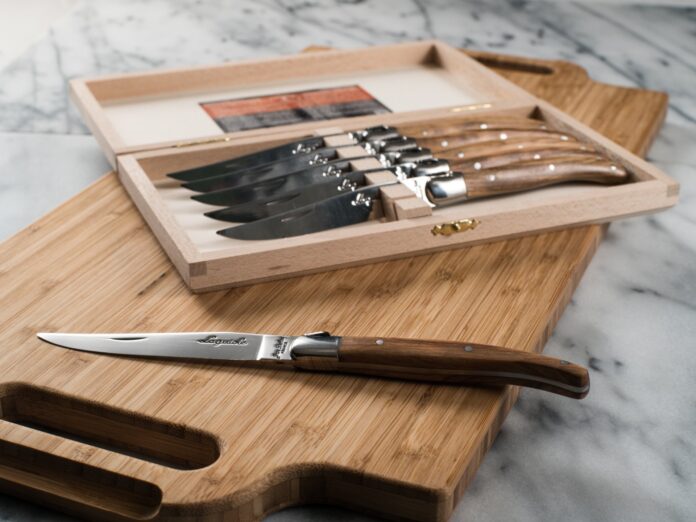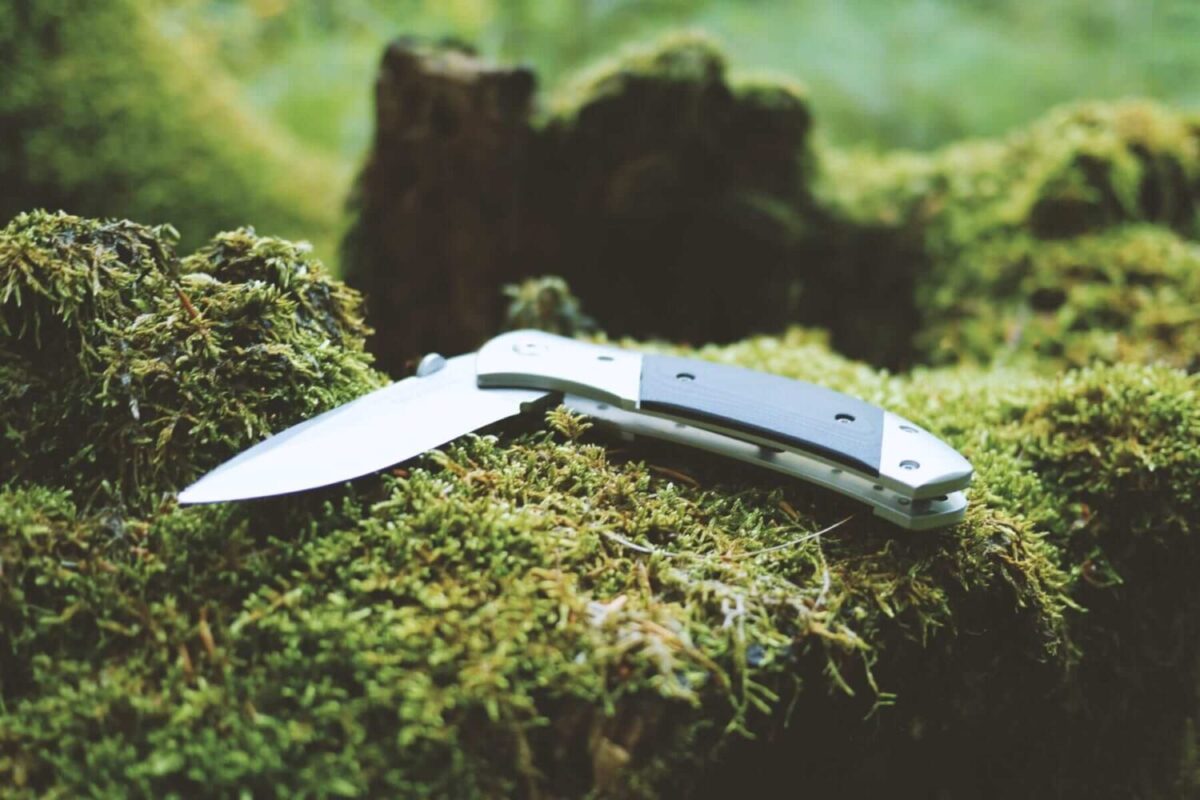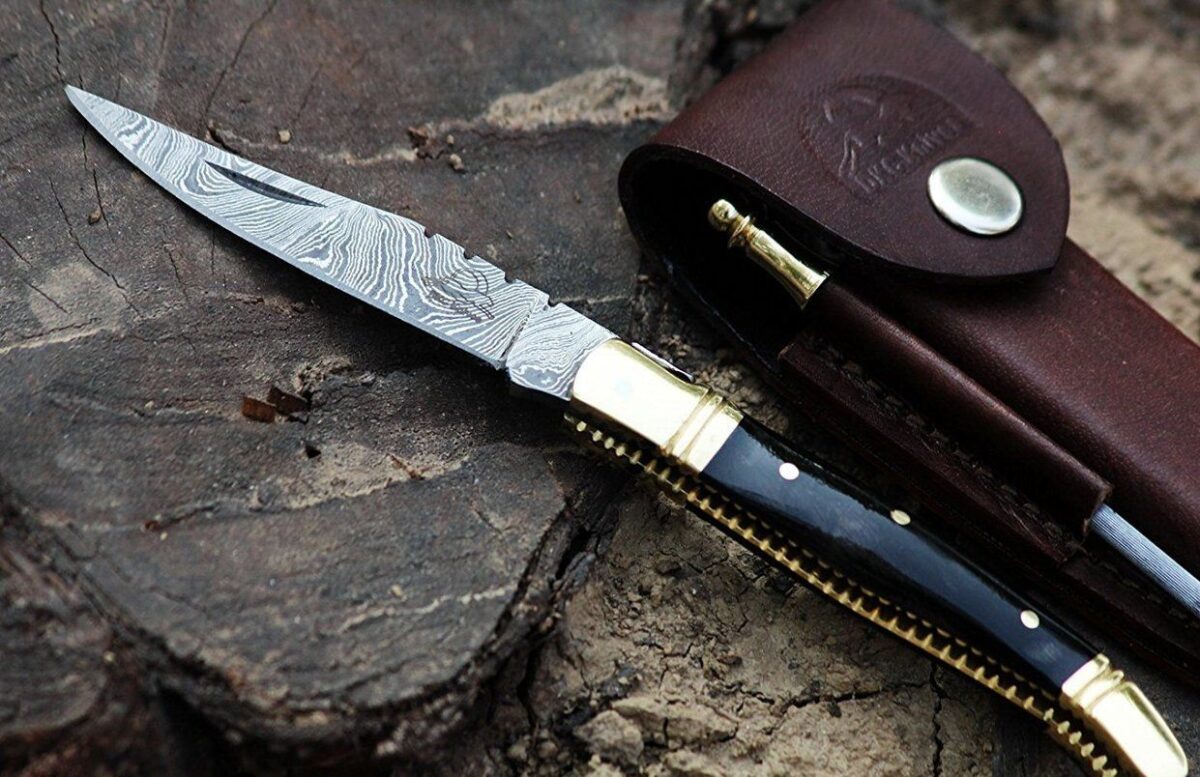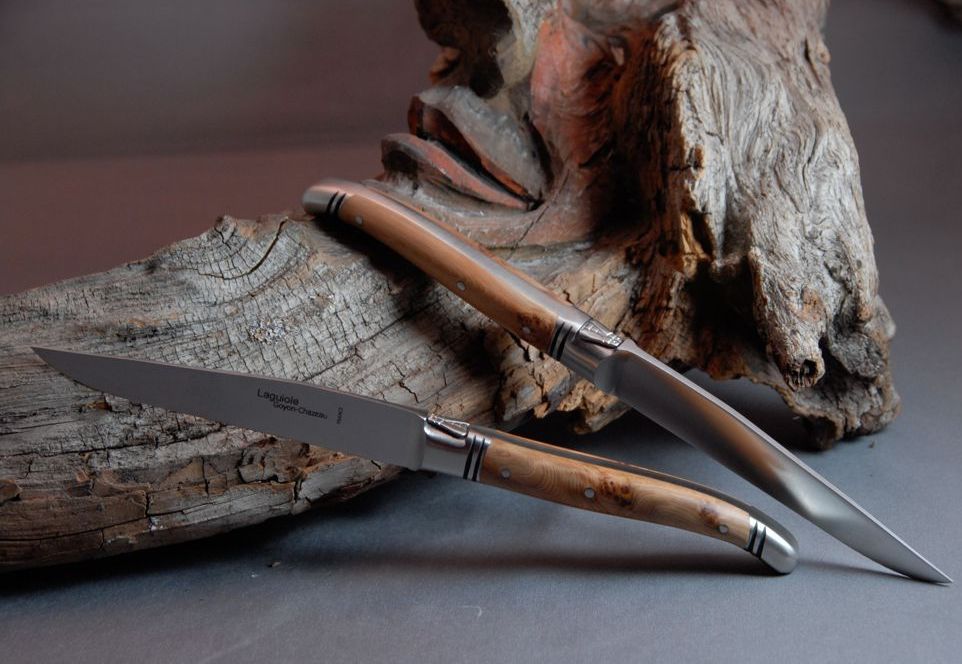
From the 1820s, the knife makers in the Laguiole village forged blades and springs with their hands. The steel used cane from Tarn and Pyrenees region. The forging was conducted in the back shop. A dog pulled the small grindstone that sharpened the blades. The blades then were tempered in La Violette’s [local spring] volcanic cold waters to harden them. The knives crafted during the 1820s had full handles designed from a bone or cow horn or ivory.
The evolution of Laguiole knives
-
1828
The local blacksmith crafted the original knife called ‘Capuchadou’. It was a simple knife with a wooden handle. In the early XIXth century, the ancestors of the village, who went to Spain to work as pit sawyers, brought the Navaja. In 1828, a knife called Straight Laguiole was born with a combination of Capuchadou and Navaja. The handle of the knife was designed from ivory or bone and ended with a bird’s beak shape. The blade was in the shape of a Bourbonnais with a center point.
-
1840 – 1860
In 1840, an awl was introduced to the folding knife to help the livestock farmers and shepherds. In the next two decades, the curves of the blade were gradually refined. The blade curves were similar to the Yssingeaux style and handles were elegant. The Holy Cross on the handles was designed to help lonely shepherds during their prayers in faraway places. Between 1950 & 1960 the folding Laguiole knife with deer-horn handle was designed.

-
1880
A third piece ‘the corkscrew’ gets added to the Laguiole knife. The change was a response to the Aveyron people’s request, who worked in Paris cafes. The Café owners and the waiters were proud of using their 3-piece knife.
-
1900 – 1930
For the first time, the springs got decorated. Bee with flower motif and spring gets decorated with sporadic triangular patterns. The shapes and decoration on the knives are completely handcrafted using a file. In 1990, knife-makers Calmels and Pages were awarded a gold medal at the Paris Exhibition. Within 10 years the knife-makers were recognized twenty times for making quality knives.
Instead of the floral motif, the first bee appeared in 1909. The ivory handles were sculpted and carved with various forms including butterflies, horse hooves, clovers, rattlesnake tails, and ram’s head. In the Edwardian & Art Nouveau era, new knives appeared including handles carved from ivory in the shape of people’s heads like Venus, Joan of Arc, and Napoleon. Some engravings were flower patterns that needed extremely fine carving.

-
1930 – 1987
The knife’s fame surpasses Aubrac and as demand increases the local cutlers are unable to handle the orders as they were not keen to invest in the latest machines. Gradually, Thiers took over the total knife manufacturing in the cutlery capital. Handcrafted manufacturing is conducted in the village on a low scale in comparison to colossal industrial production by Thiers.
In 1985, the Japanese company Kyocera began manufacturing knives made of ceramic-based on zirconium dioxide. These knives were the result of the most advanced technologies at that time. To date, these knives have become very widespread, at an extremely low price. The process of making ceramic knives is quite time-consuming. To produce a ceramic blade, zirconium dioxide powder is first pressed at a pressure of 300 tons per square centimeter, then subjected to heat treatment at temperatures of 1600-2000 degrees Celsius in special furnaces for a long time (from two to six days).
The quality of ceramic knives differs greatly from each other since it depends on the technological capacity of the manufacturer, and on the observance of a complex technological process. A ceramic knife, due to the fragility of the cutting edge, requires quite large sharpening angles. On average, it is recommended to sharpen it at a full angle within 30-40 degrees.
According to shop.tsprof.com, sharpening ceramic knives is also complicated by the fact that the process does not form a burr and the angle control must be maintained using special devices, primarily a digital protractor. Thus, the hand sharpening of ceramic knives, without the use of sharpeners, requires from the sharpener extreme, masterly skills.
-
1988 -2004
In 1988, two forging mills manufacturing different parts started, which got assembled at the local workshops. The success is awesome with 400,000 knives produced annually.
Traditions, legends, and myths associated with Laguiole knife
What does the Holy Cross symbol on the knife’s handle stand for?
It is popular as the ‘Shepherd’s Cross’. At the end of the 18th century, the cross appeared. On the huge basaltic Aubrac Plateau, a cattle migration occurs twice every year. In the past, distance had to be covered on foot and the migration was several days’ expedition.
In the Catholic religion, the migratory shepherds used to stick the blades of their knives into the bread. Therefore, this decoration was carved on a single side of the handle, to be used during the prayer.
Which insect represents the springhead?

The manufacturers use the ‘Bee’ as a technical term for the springhead. According to the local legend, a bee is Napoleon Bonaparte’s imperial seal. It was offered to the men of Laguiole town for their courage during the battles. Remember, a bee engraved on the knife does not guarantee its origin and quality.
What other patterns are carved on the springhead?
Besides the bee, you will find a variety of patterns like a 4-clover leaf, a scallop shell, a human face, etc. The traditional manufacturing process was based on the customer’s demands.
Laguiole knife cannot be given but sold……is this myth?
It is said that cutting tool must not be given because it possibly damages the relationship of love and friendship among those who give and the one that receives the gift. To avert the misfortune, the receiver offers a coin to the giver, so it becomes a trade. The reason is entirely based on superstition.
Where to buy Laguiole French knives?
Online you will find many websites selling handmade Laguiole products. On laguiole-french-knives.com, you will come across genuine pocket and table knives. Each knife is a masterpiece. You even get to choose unique materials for the handles.

Tips to identify a genuine Laguiole
Craftsmanship
Just looking at the details you can identify the craftsmanship skills. The blades will never be serrated because the artisan has spent years honing the craft of making smooth blades.
Materials
The blades are designed from silver, damask steel, and mammoth silver. The handles are made from juniper wood, warthog tooth, and buffalo horn. The handles are sturdy and not lightweight.
No lock
These knives have no lock. They are equipped with slip-joint springs. It creates resistance, while you close the knife. Therefore, when you close the knife, be extremely careful to avoid the blade from getting damaged.
Cross shape
There are silver pins embedded in the handle that represents the Holy Cross. In the past, lonely shepherds used the cross during prayers as they were far away from worship places.
Made in France
Genuine knives are generally manufactured in the Thiers and Laguiole region of France. It will have a ‘Made in France’ stamp along with the worker’s signature or trademark of the families working in this sector for more than 150 years.
As the knives are not mass-produced, the price will be high. It is worth purchasing a genuine Laguiole knife from laguiole-french-knives.com!
















